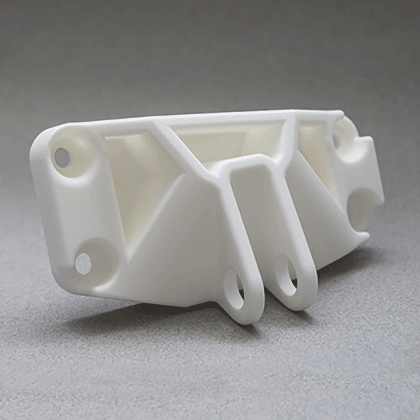Unlock the Secrets to Finding Your Perfect SLS Printing Partner!
In recent years, SLS (Selective Laser Sintering) printing has gained significant traction across various industries, from aerospace to medical devices. This advanced 3D printing technology allows for the creation of complex geometries and functional prototypes, making it an essential tool for manufacturers and designers alike. However, the effectiveness of SLS printing largely depends on the choice of service provider. Selecting the right SLS printing service is crucial to ensure that your specific project needs—such as material requirements and part specifications—are met. In this article, we will explore the key considerations to help you find the perfect SLS printing partner for your upcoming projects.

Understanding SLS Printing Technology
Selective Laser Sintering (SLS) is a powerful 3D printing technology that utilizes a laser to fuse powdered materials, layer by layer, into solid structures. One of the primary advantages of SLS is its remarkable material versatility; it can process a wide range of powders, including plastics, metals, and ceramics. This flexibility allows for the production of high-strength parts with intricate designs that would be impossible to achieve through traditional manufacturing methods. Unlike other 3D printing techniques, such as FDM (Fused Deposition Modeling) or SLA (Stereolithography), SLS does not require support structures because the unused powder acts as a support medium, further expanding design possibilities. This unique blend of material choice and design freedom makes SLS an attractive option for businesses looking to innovate and push their projects to new heights.
Identifying Your Project Requirements
Before embarking on your search for an SLS printing service provider, it's essential to have a clear understanding of your project requirements. This includes considering factors like material selection, part size, and production volume. For instance, are you looking for a durable part made of nylon, or do you need a lightweight component from a metal powder? Additionally, think about the dimensions of the parts you need; certain providers may have size limitations. To help you clarify your needs, consider the following checklist of questions: What is the purpose of the part? What mechanical properties are required? How many units do you need, and in what timeframe? Answering these questions will not only guide your search for a service provider but also improve communication when discussing your project needs.
Evaluating Potential SLS Printing Service Providers
Once you have identified your project requirements, it's time to evaluate potential SLS printing service providers. Key factors to consider include their experience in the industry, the range of capabilities they offer, and their quality control processes. A service provider's portfolio can provide valuable insights into their expertise and the types of projects they have successfully completed. Look for case studies that demonstrate their ability to handle projects similar to yours. Additionally, don't underestimate the importance of customer service; a responsive and knowledgeable team can make a significant difference in your overall experience. Engaging with their previous clients for testimonials or reviews can also shed light on their reliability and professionalism.
Requesting Quotes and Samples
After narrowing down your list of potential service providers, the next step is to request quotes and samples. When you reach out to potential partners, be clear and concise about your project needs and expectations. Providing detailed specifications, including material type, dimensions, and quantity, will help them give you accurate proposals. Don't hesitate to ask for samples of previous work to assess the quality of their output. This step is crucial, as it allows you to evaluate not just the technical capabilities of the provider but also their attention to detail and commitment to delivering high-quality results.
Final Thoughts on Choosing an SLS Printing Service
In summary, choosing the right SLS printing service provider is a decision that can significantly impact the success of your project. By understanding SLS technology, clearly identifying your project requirements, evaluating potential providers, and effectively communicating your needs, you can ensure a successful collaboration. Remember, thorough research and evaluation are key to finding a partner who aligns with your expectations and can deliver the results you need. Take the time to follow these steps, and you will be well on your way to unlocking the full potential of SLS printing for your projects.








